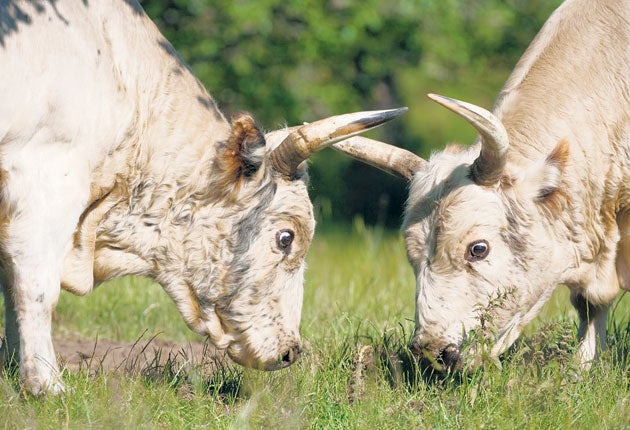Your support helps us to tell the story
From reproductive rights to climate change to Big Tech, The Independent is on the ground when the story is developing. Whether it's investigating the financials of Elon Musk's pro-Trump PAC or producing our latest documentary, 'The A Word', which shines a light on the American women fighting for reproductive rights, we know how important it is to parse out the facts from the messaging.
At such a critical moment in US history, we need reporters on the ground. Your donation allows us to keep sending journalists to speak to both sides of the story.
The Independent is trusted by Americans across the entire political spectrum. And unlike many other quality news outlets, we choose not to lock Americans out of our reporting and analysis with paywalls. We believe quality journalism should be available to everyone, paid for by those who can afford it.
Your support makes all the difference.The blast furnaces that powered the Industrial Revolution had only just begun belching clouds of carbon into the sky when, in 1860, Charles Darwin encouraged a Victorian nobleman to maintain accurate data on an intriguing herd of cattle living feral in the grounds of his medieval castle.
He could not have imagined that 150 years later the behaviour of their descendants would shed light on a problem that his pioneering contemporaries had set in motion – climate change.
Stories of unseasonably warm springs causing daffodils to bloom and birds to arrive prematurely have become perennials in recent years. But only now have scientists observed climate change leading to behavioural changes in mammals.
A new study on Northumberland's Chillingham cattle, published in the British Ecological Society's Journal of Animal Ecology, shows climate change is altering when the animals breed, and fewer calves are surviving as a result.
The team of ecologists, led by Dr Sarah Burthe of the Centre for Ecology & Hydrology, used the cattle to discover more about the impact of climate change on phenology in mammals because – encouraged by Charles Darwin – information about the cattle has been collected since 1860.
Long-term datasets are crucial tools for studying climate change, yet very few exist. "The Chillingham cattle data are unique and, as far as we know, the longest mammal phenology dataset in the world," she said.
The Chillingham cattle, with their white coats, red ears and horns, currently number 85 animals, who roam freely around the grounds of Chillingham Castle, seat of the historically influential Grey family. They were once domesticated but now live wild and differ from most other UK mammals because they give birth throughout the year, not only during spring and summer. Over the past 60 years, more and more cattle have been born during the winter. When the record of births was cross-referenced with Met Office weather data, scientists found warmer springs nine months earlier were responsible.
Dr Burthe explained: "Cattle have a nine-month gestation period. Warm springs allow vegetation to start growing earlier, providing the cattle with more nutritious plant growth, and more cows conceive earlier as a result. Winter-born calves don't do very well and are more likely to die before they reach the age of one. This suggests that the cattle are responding to climate change but this is having a negative impact on them." Historical records indicate that the wild cattle of Chillingham have lived on their present site since the 13th century, when the castle was first built near the Scottish border. Today visitors are led into the park by an experienced guide. Occasionally the cattle are impossible to track down. When they are found, visitors must keep their distance. The herd have featured on postage stamps and were painted by noted Victorian animal painter Sir Edwin Landseer. Darwin wrote to the castle's owner, the Sixth Earl of Tankerville, to congratulate him on his preservation of a breed of cattle he thought Julius Caesar had encountered in the wild forests of what is now Germany.
Generations of inbreeding have turned the cattle into something of a scientific marvel, in that they prove that inbreeding can sometimes be good for you. DNA samples from the hair roots of dead individuals show the cattle are genetically identical. That their population has been increasing over the past decade has given hope to scientists trying to increase the numbers of critically endangered species such as the South China tiger.

Join our commenting forum
Join thought-provoking conversations, follow other Independent readers and see their replies
Comments